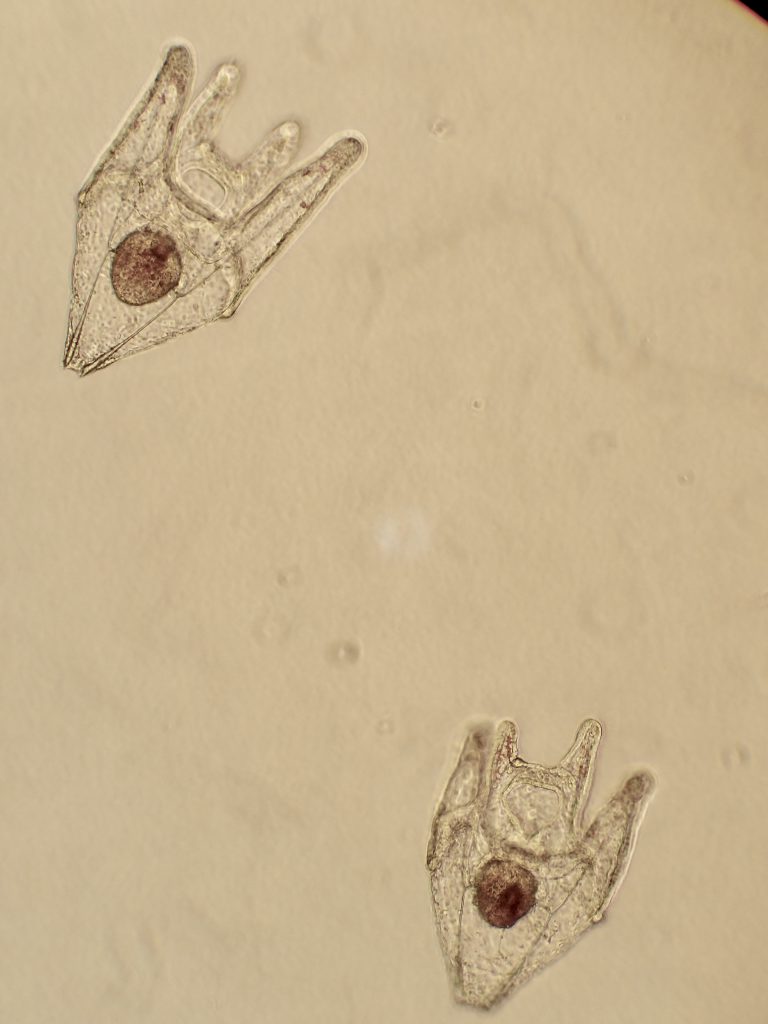It has been a few weeks since I posted about my most recent batches of urchin larvae. Some strange things have been happening, and I’m not yet sure what to make of them. It would be great if animals cooperated and did what I expect; somehow that never seems to be the case. The upshot of all this uncertainty is that there is always something new to learn. I, for one, am not going to complain about that.
One noteworthy thing to report is that my hybrids all died, very quickly and unexpectedly. They had been racing through development and on the dreaded Day 24 they looked great.

23 January 2017
© Allison J. Gong
And the next time I changed their water, they were all dead. So much for the hybrid vigor I had written about earlier. Teach me to get cocky and think I know what’s going on.
Fast forward to Day 52, and some of the cultures are still going strong. I originally set up four matings, and at least some individuals from each are alive. One thing that seems to happen when I start multiple batches of larvae at the same time is that the batch with the fewest numbers does the best. This time my F3xM1 mating was always the least dense culture, but some of them have already begun and completed metamorphosis. And the ones that are metamorphosing are the ones being fed what I expected to be the less desirable food source. As I said, not much of this whole experience is making sense.
The good thing is that I have an opportunity to observe these larveniles in action. As long as they don’t get arrested in this neither-here-nor-there stage, they should soon join their siblings as permanent inhabitants of the benthos.
This video contains short clips of three different larveniles. I’ve arranged the clips from earlier to later stages of metamorphosis. Although these are three separate individuals, you can imagine that each one goes all of these stages.
Having both tube feet (for crawling around the benthos) and ciliated bands (for swimming in the plankton) make these animals unsuited for either habitat. They have gotten very heavy and sink to the bottom, but it doesn’t take much water movement to knock them off their five little tube feet. It always amazes me that teensy critters like this, so fragile and easily killed, manage somehow to stick in the intertidal and survive long enough to be grown-up urchins on their own. And yet some of them will. I’ve seen it happen.
